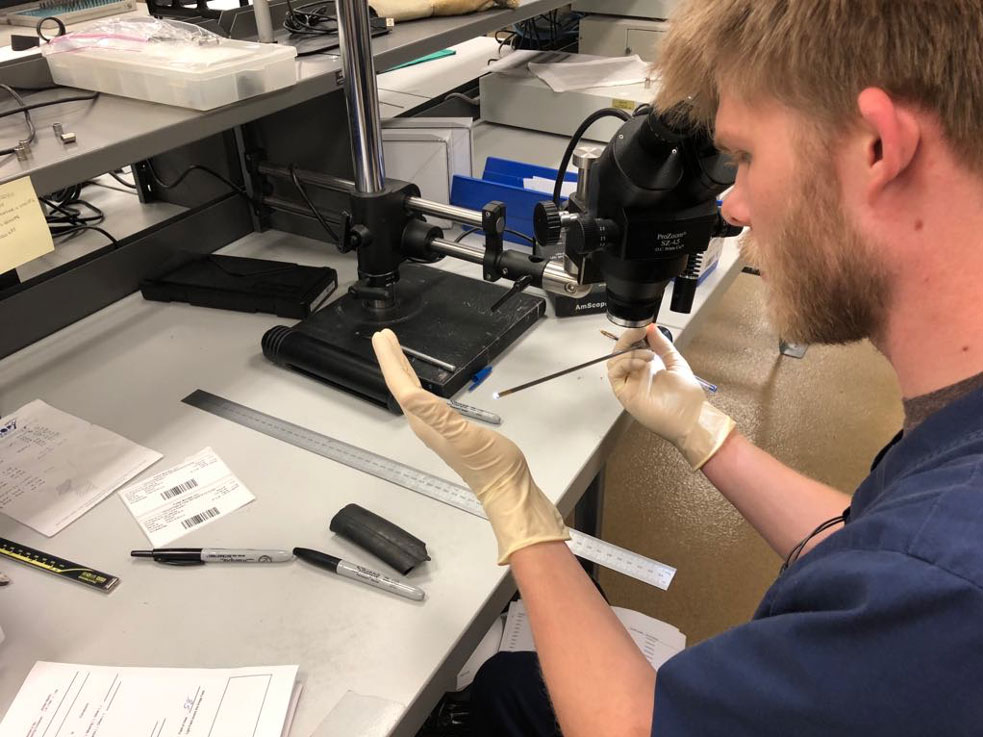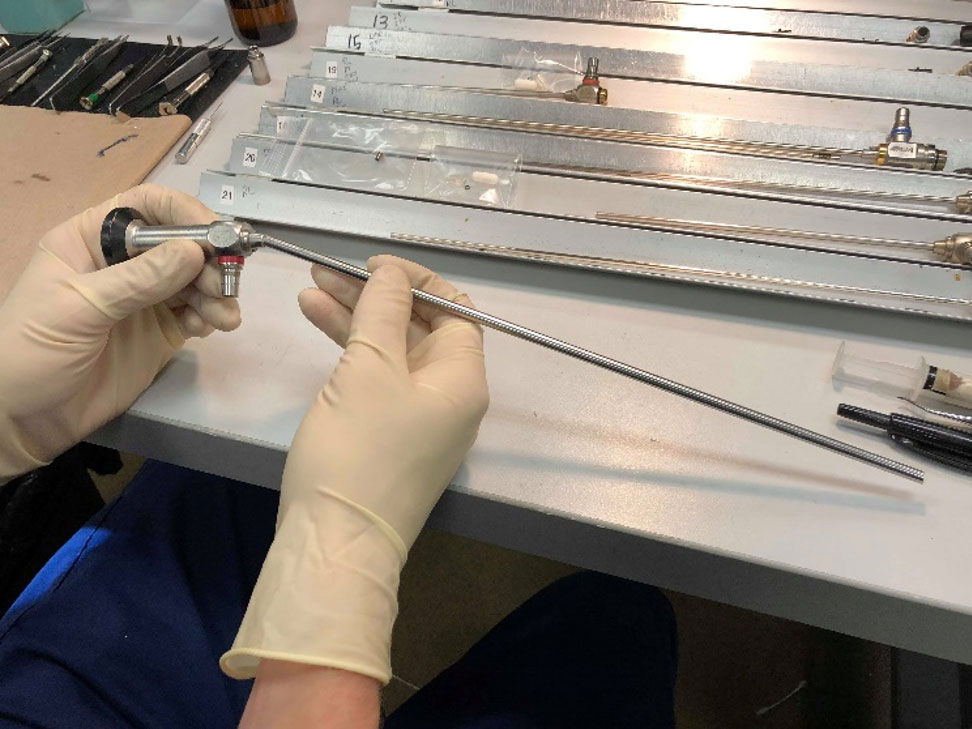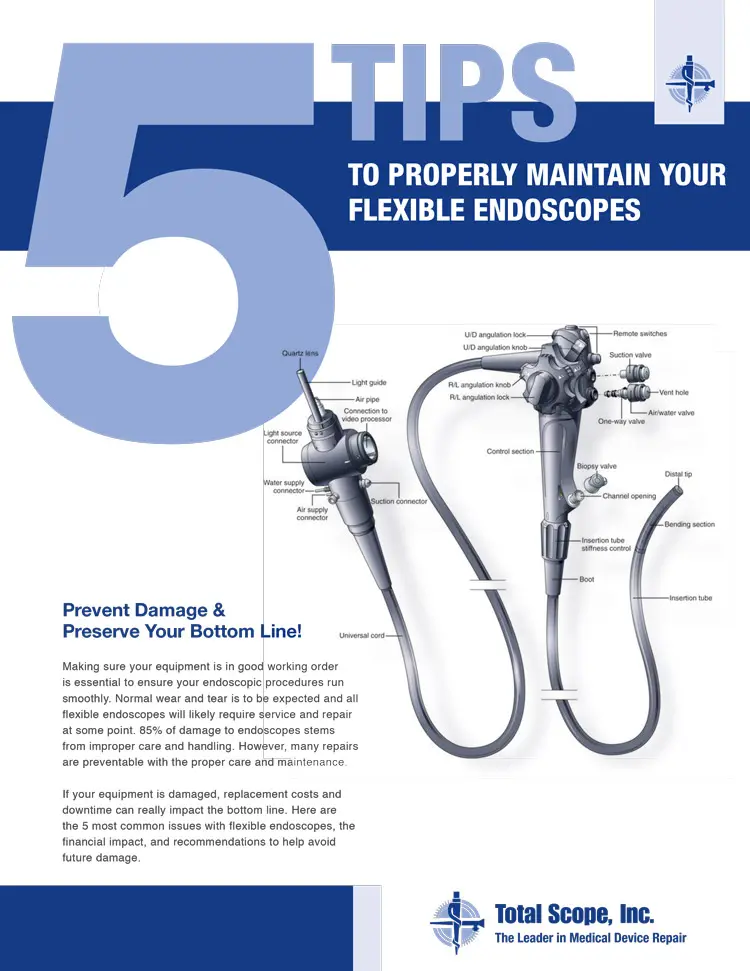Rigid endoscopes, while very strong and durable, are unfortunately vulnerable to damage. These types of endoscopes are less forgiving to bending or flexing than semi-rigid or flexible endoscopes. Normal wear and tear is not the problem as much as physical trauma.
The first step to preventing damage to these tools is to understand the most commonly damaged areas of the scope, and how those damages occur.
Vulnerable Sections of Your Endoscopes

By demonstrating proper care and handling techniques you can help your scopes function better and longer in your OR.
There are four sections of the rigid endoscope that are the most susceptible to damage:
- Eye Cup and Ocular System
- Light Post
- Lens Train System
- Objective
Eye Cup & Ocular System
The Eyecup and Ocular System is the part of the scope that doctors use to observe the patient. The eyecup is made of durable plastic and is sometimes detachable. When cleaning this area, be sure to dry all cleaning solution, as dried up solution can collect and cloud the image.
The most common problem seen in the ocular system of the scope is a leak at the base, likely caused by rough handling or torqueing when applying or removing the light cord to the scope.
There are instances where separation can occur between the eyecup and the coverglass. This can also cause cloudiness and should be reported immediately before fluid penetrates into the scope.
Light Post
Sometimes, there are adapters present at the Light Post. These adapters need to be taken off when cleaning. If this is not done, the cleaning solution can dry up, and the solution can be burned by the light creating. This will result in an orange or brown image on the scope.
It also isn’t hard to accidentally bend the light post due to excessive tension from the fiber-optic cable.
Lens Train System, the Most Vulnerable Part of the Rigid Scope

The lens train system is made up of a series of rod lenses, achromats, and spacers lined up within the stainless-steel tubing. The achromats are set on either end of the rod lens to ‘positively’ and ‘negatively’ reflect the image from the objective back to the ocular system. The number of pieces within this system varies depending on the length of the scope.
This is the area of the scope most susceptible to damage. The rod lenses are made of glass. They can shatter or chip causing a distorted image.The stainless-steel tubing is designed to protect the lens train system. Glass is not flexible, so bending the stainless-steel tubing will result in broken rod lenses.
The Objective System
The Objective System is the part of the scope that is inserted into the patient. It is made up of a number of pieces including field lenses, negative lenses, prisms and the window.
Tip damage is the most common repair we see in this area. Damage to the distal tip can occur when a scope is nicked by a shaver or hit with a laser during a procedure. Physical trauma to the tip can also occur when the scope incurs impact.
This damage can cause a number of problems for the scope. A cracked objective can allow fluid to enter the scope causing a cloudy image. A cracked window will cause a fractured glass or ‘kaleidoscope’ appearance. Additionally, if light fibers are exposed to fluid the image will appear dark.
Learn more about extending the lifespan of your scopes.
If you do damage your scope, you can contact us to learn more about our rigid endoscope repair services.
 FREE SHIPPING Anywhere in the Country for Repairs
FREE SHIPPING Anywhere in the Country for Repairs